Chariots were used on the battlefield in China as early as the 5th century BC. They were mainly mobile defensive elements for the protection of the soldiers, while they carried out some activity such as the excavation of tunnels or trenches.
From these primitive models it was developed in the 3rd century AD. a type of car that worked similarly to a compass, but instead of pointing north, it always pointed south, regardless of which way the car turned.
It consisted of a two-wheeled vehicle that incorporated a mobile pointer that always pointed south, and that used to have the shape of a human figure with an outstretched arm. It was used as a compass for navigation, although it may have had other uses as well.
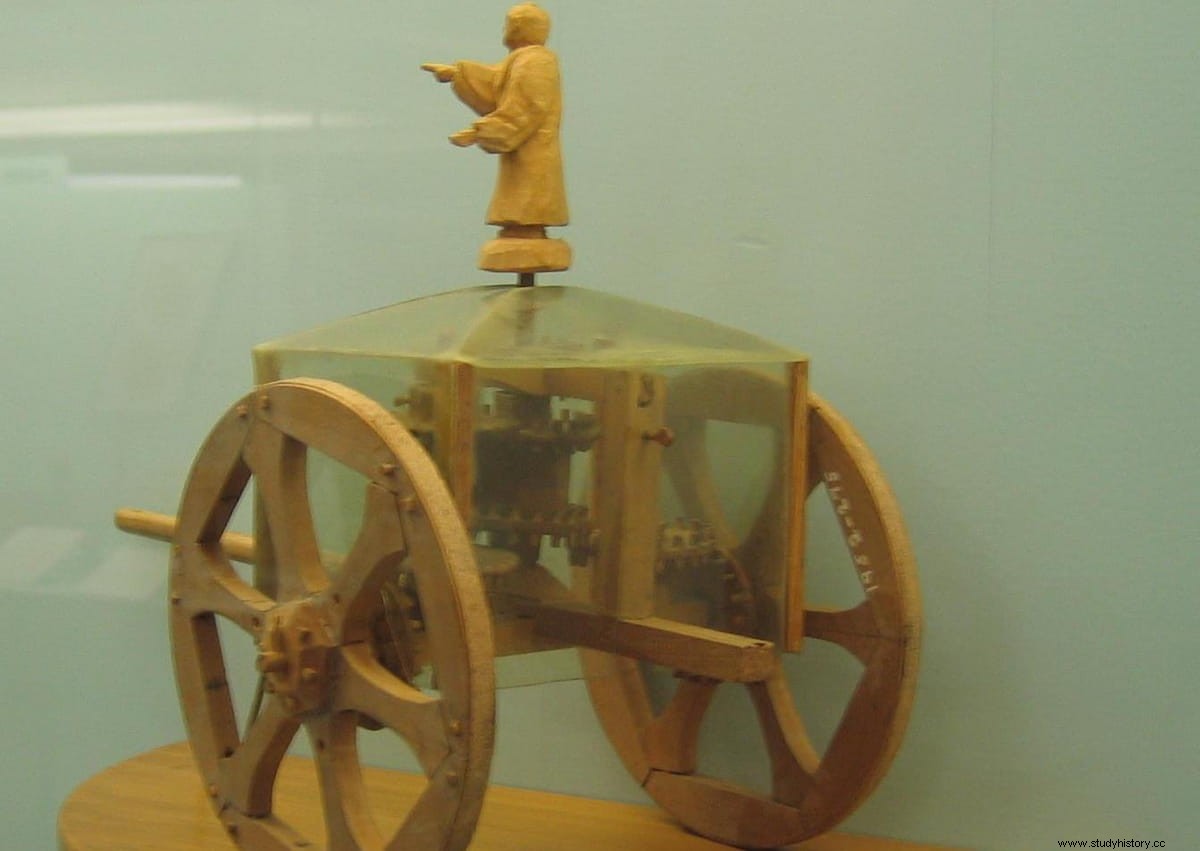
The first known and reliably documented is the one built by the engineer Ma Jun, who lived between 200 and 265 AD. during the era of the Three Kingdoms, in the kingdom of Wei. He is therefore credited with inventing it, as well as that of the silk loom.
It used a directional compass system that had no magnetic function, but instead worked through the use of differential gears (applying the same amount of torque to the drive wheels rotating at different speeds), as the magnetic needle compass would not be discovered. until more than seven centuries later.
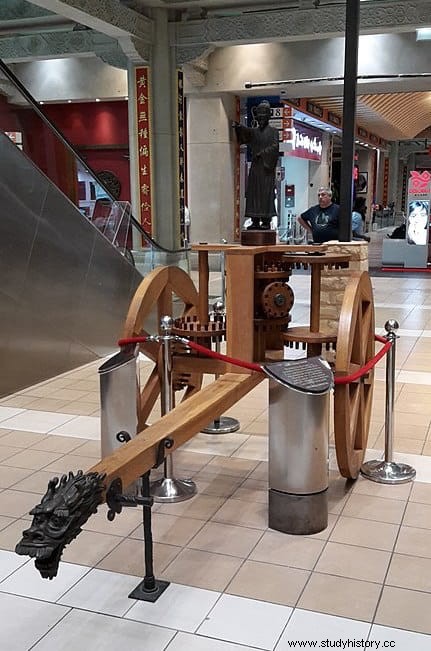
At the beginning of the trip, the pointer was manually oriented towards the south, and then each time the car turned, the gear system was in charge of keeping it correctly oriented with respect to the body of the car, to counteract the turn, and keep it pointing in one direction. constant south. Thus, the mechanism performed a kind of dead reckoning directional, although prone to errors and cumulative uncertainties.
The pointing figure was connected, probably by intermediate gears, to a shaft that rotated at a speed proportional to the difference between the rotational speeds of the wheels. When the car moved in a straight line, both wheels turned at the same speed and therefore the pointer did not move. When the car turned, the wheels turned at different speeds and the differential turned the pointer, compensating for the car turning.
In late medieval dynastic periods Ma Jun's south-indicating chariot was combined, into a single device, with the odometer that measured distances. According to Chinese sources it appears that chariots were used, intermittently, until at least the year 1300.
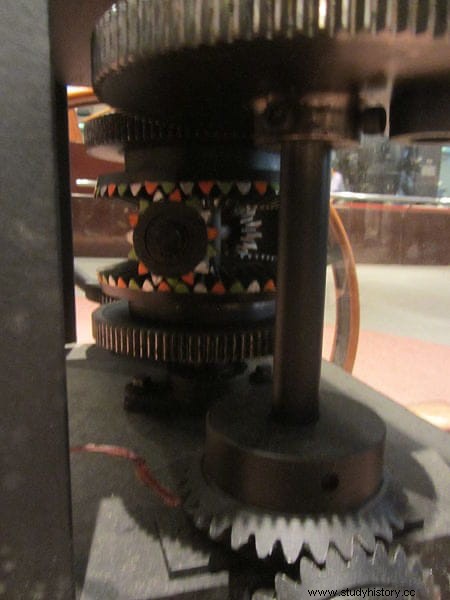
Some texts suggest that the invention of the device is much older. The Book of Song , a history of the Liu Song dynasty (the first of the Southern Dynasties in China) written by Shen Yue between AD 502 and 577. says that
According to this text, Ma Jun would have limited himself to building a new specimen, since all the previous ones had been lost, to the disbelief of some scholars who claimed that such an artifact could never have existed:
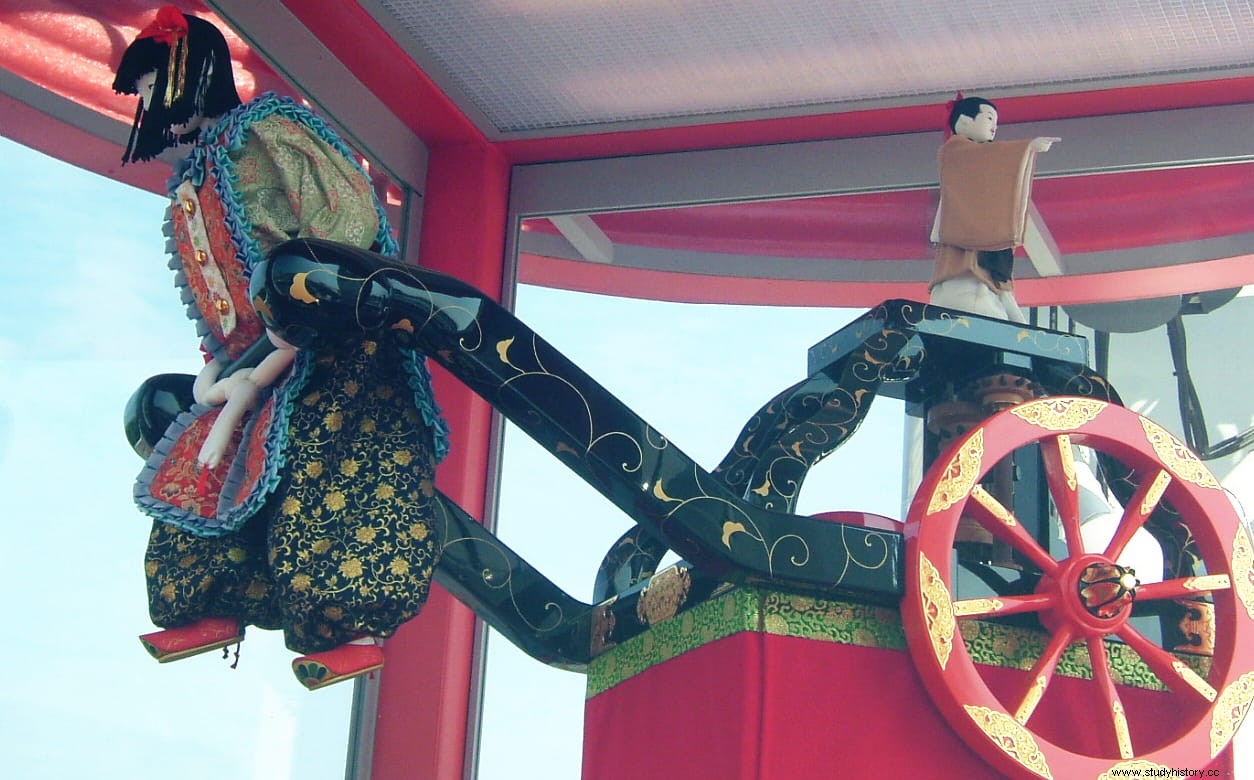
However, it seems that all these cars did not work very well (probably only on short trips), so during the trips the gears had to be adjusted numerous times. Until at the end of the 5th century AD. An engineer named Zi Zu Chongzhi seems to have managed to make one, so good that even though he took numerous curves and changed direction multiple times, he never stopped pointing south. 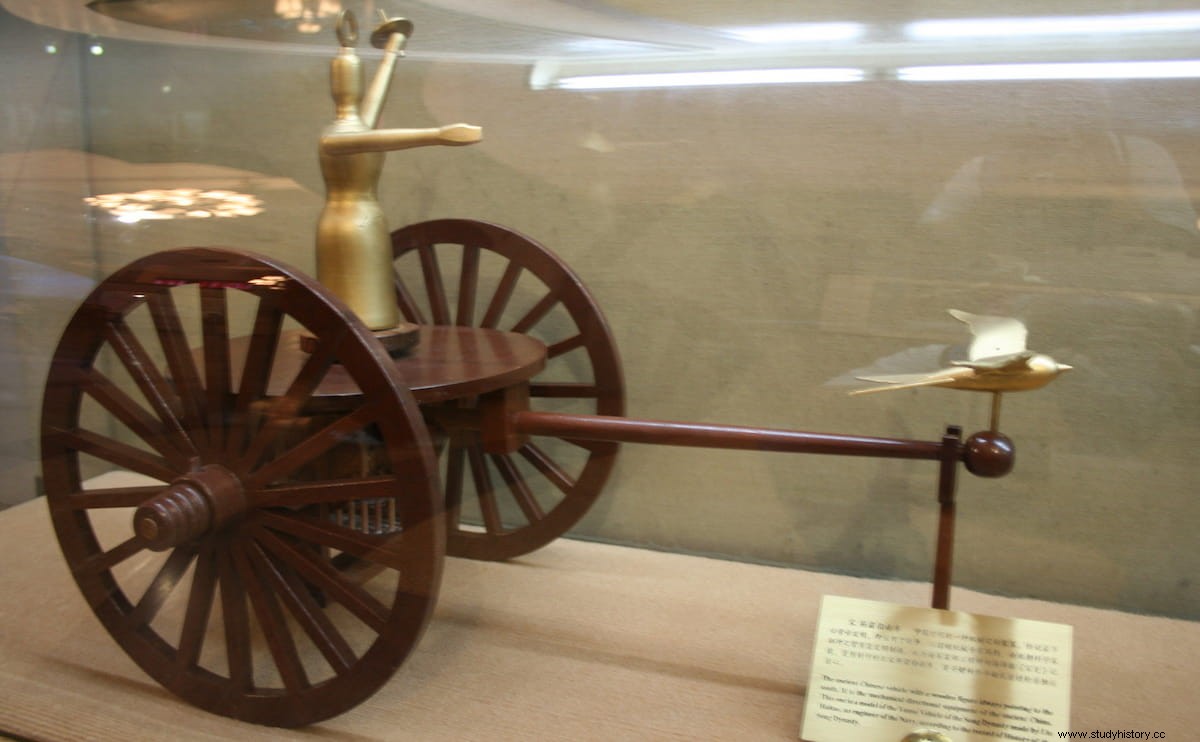
In any case, the curvature of the Earth's surface would have made these artifacts quite inaccurate. If the journeys were short the discrepancies would be small and unimportant, but on long journeys they would have functioned as a very imperfect compass.
If south-pointing chariots powered by differential gears really existed, they would have been many centuries ahead of the first differential gear on record, created by Joseph Williamson to correct the equation of time for a clock that displayed local mean time and the sun hour. However, it is possible that the Antikythera mechanism also used differential gears.
No historical cart of this type is preserved, but more or less faithful replicas of the originals can be seen in the Beijing Museum of History and the National Palace Museum in Taipei (Taiwan). In addition, the Ontario Science Center in Toronto (Canada) exhibits two functional replicas. And there are examples in other places like Dubai and Japan.
